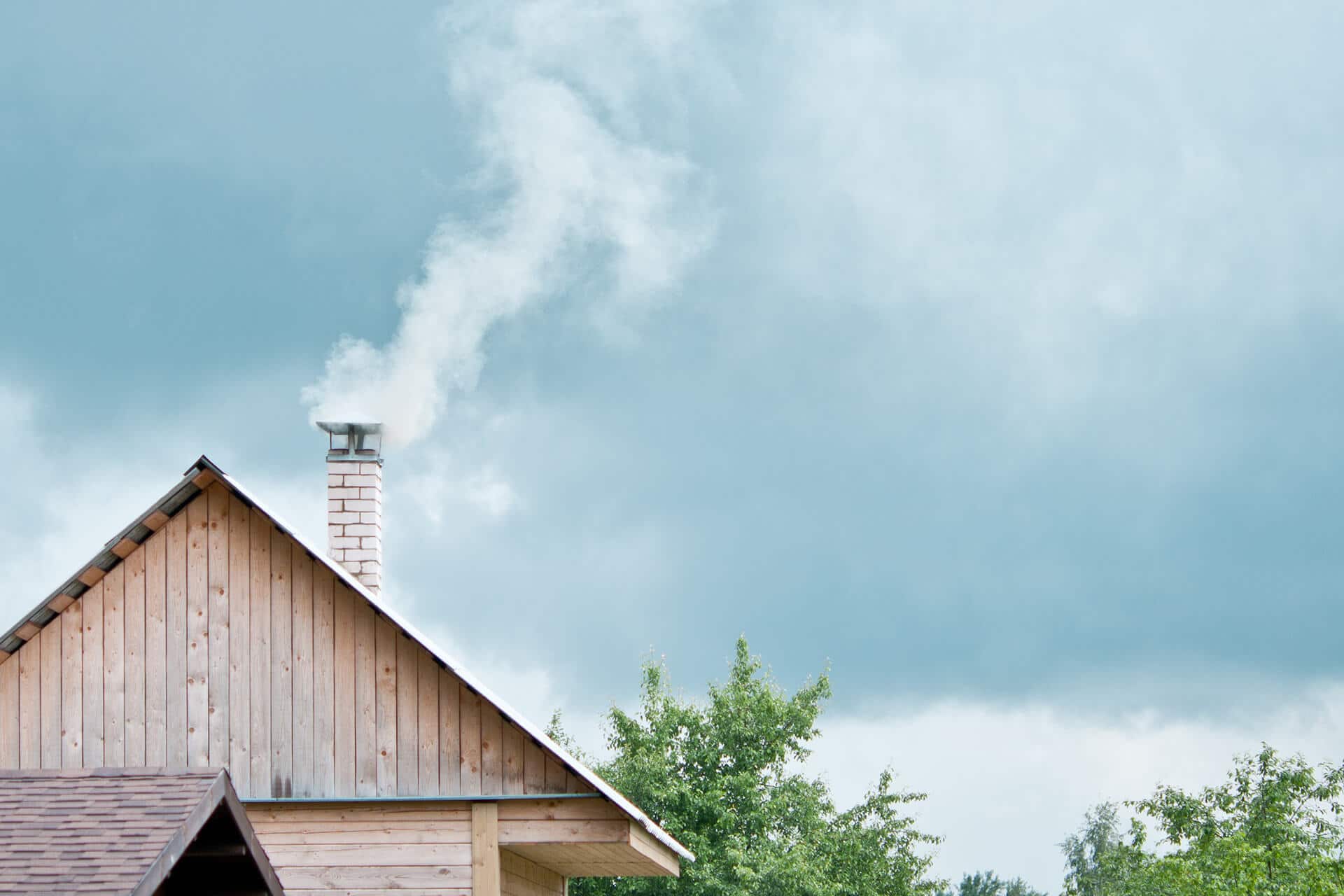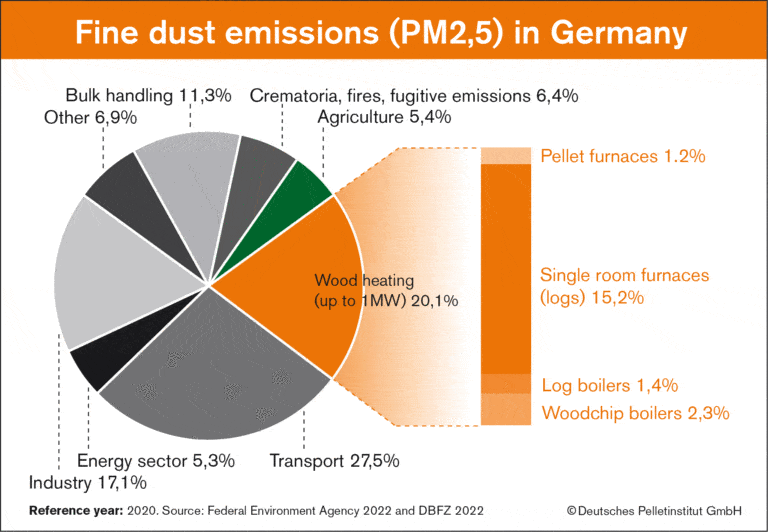Blog
Pellet central heating systems
The German Federal Environment Agency is reigniting the discussion about particulate matter from wood-burning stoves. In the process, outdated single-room stoves are equated with the most modern automated central heating systems. This is one of the reasons why the information is very misleading, especially with regard to pellets. The share of the nationwide fine dust pollution caused by pellet central heating systems amounts to just 0.3 % (PM10; UBA 2020).
“In for a penny, in for a pound,” one might say, so it is all the more important that central heating with wood be clearly separated from the old individual stoves in living spaces. It is questionable why the German Federal Environmental Agency does not distinguish more precisely. It is known that all pellet central heating systems operated in Germany currently cause about only 0.3% of particulate matter emissions. Central wood chip heating systems and wood log boilers follow with very low 0.8 % and 0.6 %, respectively. These values prove that modern wood-fired systems are cleaner today than ever before.

Heating more efficiently than ever with pellet central heating systems
According to the data from the German Federal Environmental Agency 2022, the diagram on the right shows the distribution of particulate matter emissions in Germany by source. The largest contributors are road traffic, accounting for 27.5 % of emissions, and wood heating sector (up to 1MW), accounting for 20.1 % of emissions. Within the wood heating sector, single room furnaces (logs) account for the largest proportion of emissions at 15.2 %, followed by woodchip boilers at 2.3 %, pellet furnaces at 1.2 %, and log boilers at 1.4 %. Industry accounts for 17.1 % of emissions, while bulk handling and agriculture contribute 11.3 % and 5.4 %, respectively. Crematoria, fires, and fugitive emissions account for 6.4 % of emissions, with other sources contributing 6.9 %. As shown in the diagram, German pellet central heating systems contribute only a small fraction of the total particulate matter emissions, in contrast to the much larger contributions from road traffic and wood heating.

Declining for more than a decade
In 2020, we were already able to report that particulate emissions from wood-fired systems have generally fallen by a third since 2010. The ENplus A1 quality seal is also an important basis for clean combustion of wood pellets. This is now almost standard for domestic pellets. The certification guarantees the use of a pure fuel with a very low water content for efficient combustion.
This is the case, for example, with the Hargassner Nano-PK or Nano-PK Plus pellet heaters. The Plus here stands for “PLUS condensing technology”. It is a condensing boiler that gains heat through condensation and the reduction of the flue gas temperature achieves up to 10% higher efficiency and thus lower heating costs. Therefore, wood-fired central heating systems that replace old single-room furnaces or fossil fuel boilers also steer much of the emissions savings when it comes to CO₂.
Wood indispensable for energy transition
Thanks to the continuous progress in development, we can be confident that the limits for particulate emissions, which are already easily undercut by wood and pellet central heating systems, can be reduced even further in the future. Automated, efficient wood-fired central heating systems in combination with high-quality fuel represent a great hope for the further reduction of particulate matter in the future. Thanks to wood as a renewable energy source, they are already climate-neutral today.
A small insight
